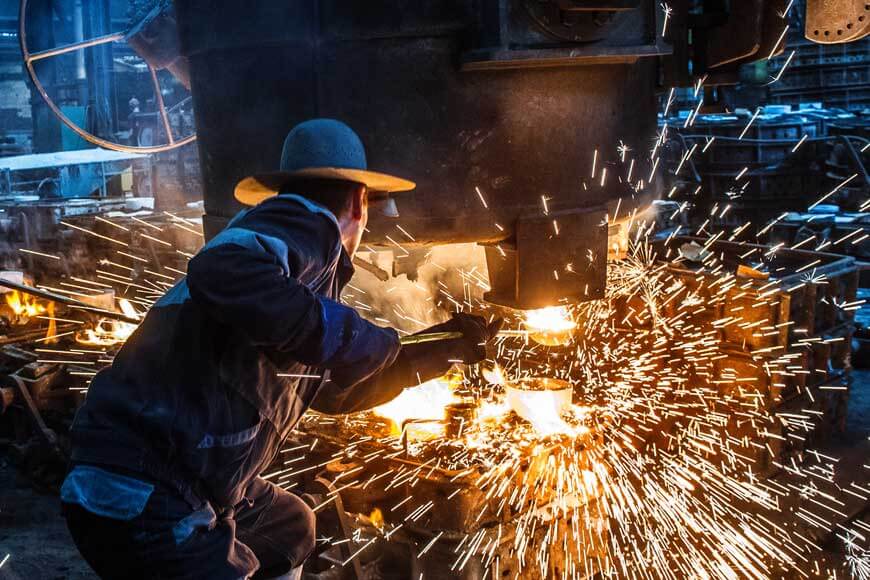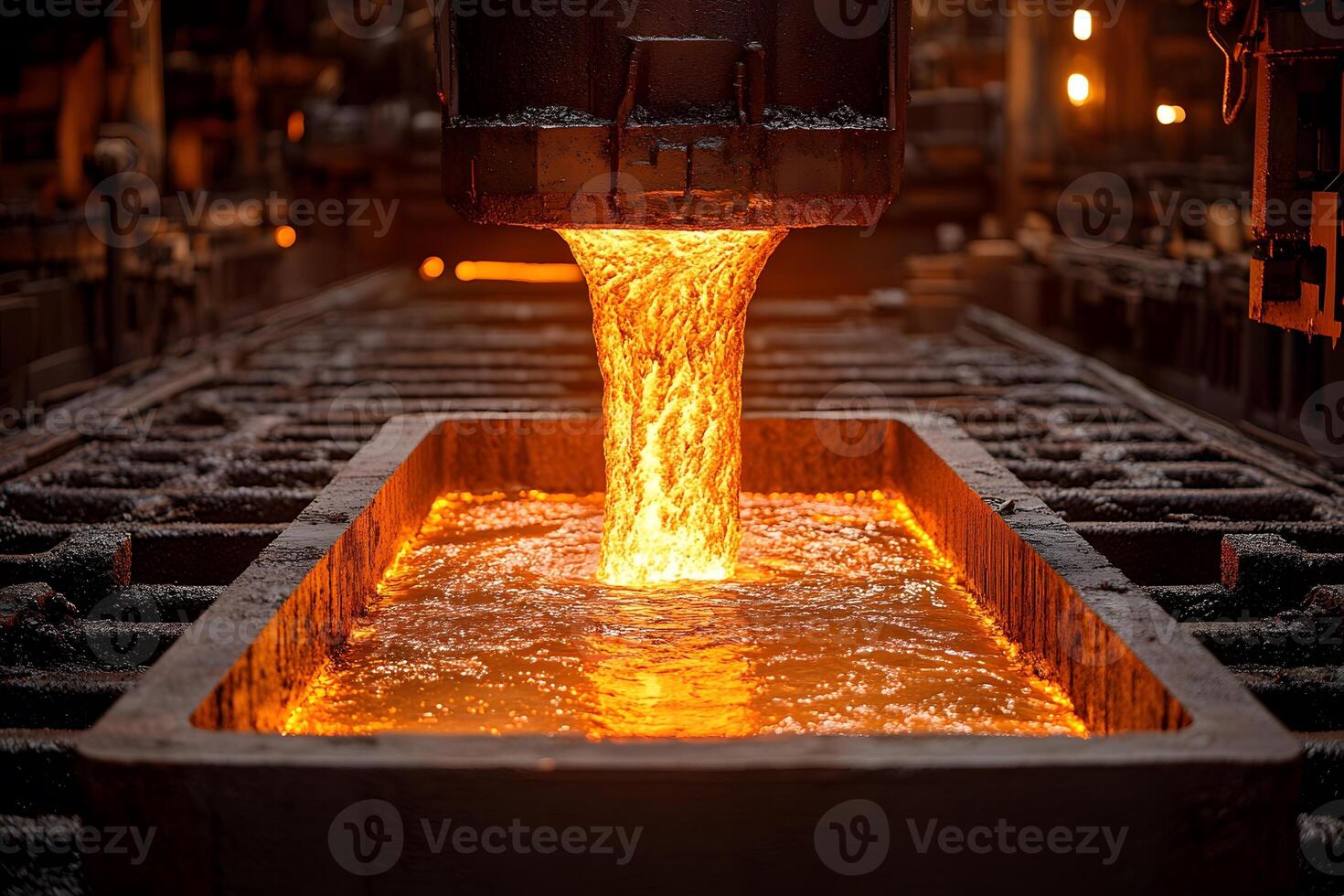Uncover How Aluminum Foundry Experts Craft Precision Components for Design
Wiki Article
Recognizing Metal Casting Procedures: Innovations and Patterns in the Foundry Sector
The foundry sector is experiencing substantial improvements driven by technical innovations. Innovations such as 3D printing and synthetic intelligence are improving metal casting processes, improving effectiveness and precision. Lasting methods are obtaining grip, highlighting the relevance of ecological obligation. Furthermore, the intro of innovative products and automation is enhancing overall casting quality. These developments suggest a critical shift in the industry, raising inquiries about future instructions and effects for suppliers.Innovations in 3D Printing for Metal Casting
Current advancements in 3D printing technology have actually substantially transformed the landscape of metal casting. The integration of additive production strategies has actually enabled the rapid manufacturing of complicated patterns and molds that were difficult or previously challenging to achieve with conventional techniques. By using products such as sand and steel powders, suppliers can develop complex geometries that improve layout flexibility and reduce material waste. This advancement not only speeds up the prototyping process but likewise permits the personalization of elements customized to particular applications.
Additionally, 3D printing promotes much shorter preparation, which is necessary in markets requiring quick turn-around for components. The modern technology also sustains the production of light-weight frameworks, thereby boosting power effectiveness in end items. Therefore, the foundry industry is experiencing a change towards even more sustainable methods, driven by the efficiency and precision used by these modern-day 3D printing strategies in steel casting procedures.
The Function of Expert System in Precision Production
As sectors significantly adopt innovative manufacturing modern technologies, expert system (AI) is playing a pivotal duty in improving precision production procedures. AI formulas analyze large datasets to determine patterns and maximize manufacturing parameters, causing enhanced precision and performance. In metal casting, AI aids in anticipating upkeep, reducing downtime by forecasting equipment failures before they occur.Moreover, AI-driven simulations make it possible for manufacturers to model the casting process, refining designs and reducing problems. Artificial intelligence methods enhance top quality control by spotting anomalies in real-time, thereby guaranteeing that only items fulfilling rigid specs proceed through the assembly line.

Sustainable Practices in the Foundry Market
Sustainability has emerged as an important emphasis in the foundry sector, prompting producers to embrace techniques that lessen ecological impact while preserving efficiency - Aluminum Casting. One prominent method includes the recycling of products, specifically metals, which significantly lowers waste and power usage. Factories are significantly implementing closed-loop systems, permitting the reuse of sand and other casting materials, thereby minimizing the demand for virgin resourcesOn top of that, energy-efficient modern technologies, such as electric furnaces, are gaining traction, as they lower greenhouse gas emissions contrasted to standard approaches. In addition, several shops are discovering the usage of green layers and naturally degradable binders to minimize hazardous by-products. Worker training on sustainable techniques has additionally come to be vital, fostering a society of environmental duty within organizations. Overall, these lasting methods not just add to ecological conservation but likewise enhance the lasting practicality of the foundry sector in a progressively eco-conscious market.
Technologies in Products for Improved Casting High Quality
With the continual evolution of the foundry market, technologies in products have ended up being vital for enhancing casting high quality. Advanced alloys and composite materials are progressively being used to boost mechanical buildings and reduce issues in castings. These products commonly offer superior strength-to-weight proportions and boosted resistance to corrosion and wear, dealing with the demands of modern applications.Additionally, the consolidation of nanomaterials is obtaining traction, permitting finer microstructures that lead to boosted surface coatings and dimensional precision. Metal Casting. 3D printing modern technologies likewise contribute in generating complicated geometries with marginal waste, making it possible for using specific products that were previously testing to cast
The growth of eco friendly binders and additives adds to lasting methods while keeping premium results. Jointly, these advancements not just improve the efficiency of actors items but also line up with the sector's shift in the direction of sustainability and efficiency.
Automation and Robotics in Metal Casting Procedures
Automation and robotics are changing steel casting procedures by improving and streamlining procedures precision. In contemporary shops, robotic systems are utilized for tasks such as mold and mildew handling, pouring, and ending up, significantly lowering human treatment. This not just decreases the danger of mishaps however also guarantees constant quality in production.Automation innovations, such as computer mathematical control (CNC) makers, facilitate complex designs and complex geometries that were formerly challenging to attain. In addition, real-time information analytics allow makers to maximize and monitor procedures performance continuously.
The integration of automation brings about enhanced performance and performance, permitting foundries to satisfy growing market demands while minimizing lead times. As the industry accepts these advancements, the labor force is additionally developing, needing brand-new abilities to operate and keep innovative equipment. Overall, Source the fostering of automation and robotics is a pivotal pattern shaping the future of steel casting processes.
Regularly Asked Concerns
What Is the Background of Metal Casting Techniques?
Metal casting techniques day back to ancient people, with proof of bronze casting in Mesopotamia around 3000 BCE. Over centuries, approaches developed greatly, integrating improvements in products and innovation, forming modern-day commercial methods.Just How Does Metal Casting Impact the Atmosphere?
Metal casting considerably official website influences the atmosphere through power usage, discharges, and waste generation. Nevertheless, innovations in lasting methods and modern technologies intend to mitigate these impacts, promoting even more ecologically pleasant techniques within the market.What Safety And Security Steps Are Crucial in Factories?

What Are Typical Problems in Metal Casting Products?
Typical problems in metal casting products consist of porosity, contraction, misruns, cool shuts, and surface area flaws. These problems arise from elements such as incorrect temperature level control, poor mold and mildew layout, and contamination throughout the casting process.Exactly How Do Foundries Guarantee Quality Assurance in Casting Processes?
Shops carry out rigorous quality assurance measures through routine evaluations, standardized screening, procedure monitoring, and adherence to industry standards. These methods assist determine issues early, ensuring the integrity and dependability of the final casting products.Innovations such as 3D printing and synthetic knowledge are reshaping metal casting processes, enhancing performance and precision. Recent developments in 3D printing technology have considerably changed the landscape of steel casting. Automation and robotics are changing metal casting processes by enhancing article source and enhancing operations precision. Metal casting techniques day back to old civilizations, with evidence of bronze casting in Mesopotamia around 3000 BCE. Common defects in metal casting products include porosity, shrinkage, misruns, cool shuts, and surface imperfections.
Report this wiki page